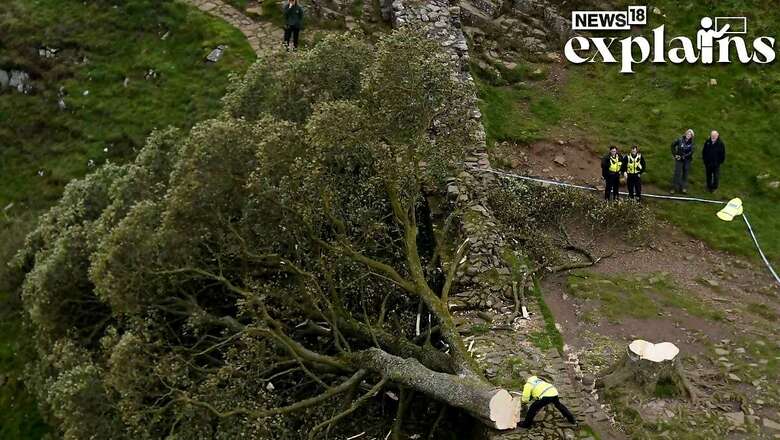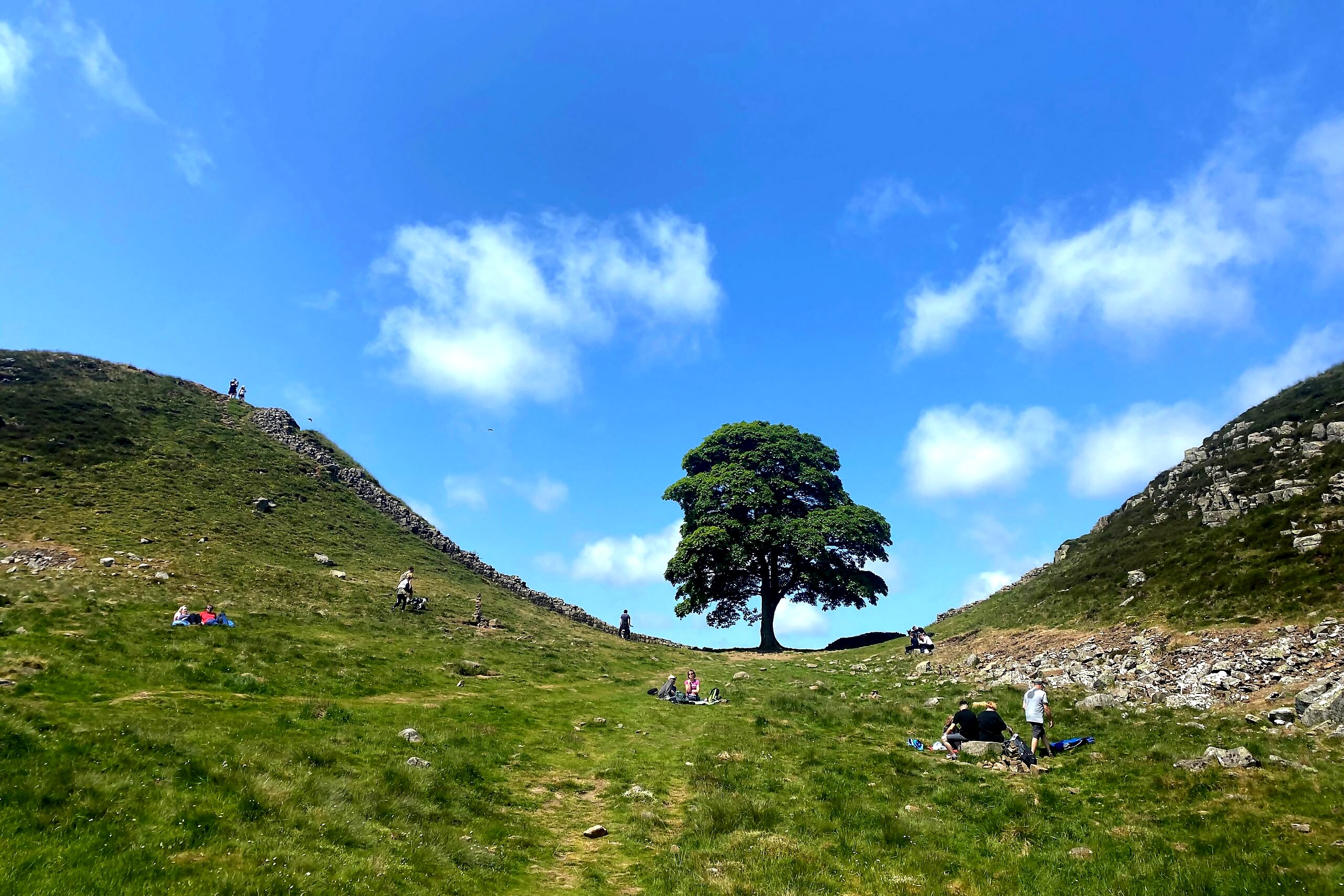
views
The UK police have made a second arrest after a 300-year-old tree famous for its beauty and unique location was cut down in the northeast of England.
A 16-year-old boy along with a man in his 60s was arrested in what is being seen as a ‘deliberate act’ of vandalism. The boy was later released on bail.
The Sycamore Gap tree, which has stood for more than 200 years in the Northumberland National Park, was found fallen after overnight storms. After reports of the cutting down of trees emerged, there was anguish and outrage among common people, writers, and photographers who have had memories associated with the iconic landmark.
The British Police stayed at the site throughout Saturday, while a cordon was placed around Plankley Mill campsite, three miles from Sycamore Gap, according to The Guardian.
Why Was the Tree Famous?
Why anyone would want to cut down one of England’s most iconic trees has left people across the UK baffled and angry.
According to reports, Sycamore trees can become extremely tall as they age reaching a height of up to 35 metres. Common to the UK, the leaves of the tree are similar to that of a maple tree, and it can live up to 400 years.

The sycamore, which won the Woodland Trust’s Tree of the Year in 2016, is a key attraction that has been photographed by millions of visitors over the years. It was located about 100 miles southeast of Edinburgh and was several hundred years old.
The sycamore became internationally famous when it was used for a scene in the 1991 blockbuster film “Robin Hood: Prince of Thieves”, starring Kevin Costner and Morgan Freeman.
The crown of the tree lay partly on the ancient Roman fortification, which stretches 73 miles (118 kilometres) from coast to coast.
Part of Roman Heritage
The tree was one of the main landmarks along Hadrian’s Wall, a UNESCO World Heritage Site built nearly 2,000 years ago when Britain was part of the Roman Empire to guard its northwestern frontier.
Hadrian’s Wall marked the boundary between Roman Britannia and unconquered Caledonia to the north. According to Northumberland National Park, more than one million people visit the wall each year.
I can’t express how angry I am at the vandalism of the tree at #SycamoreGap. People have had their ashes scattered there. People have proposed there. I’ve picnicked there with my wife and kids. It’s part of our collective soul.
We must bring whoever did this to justice. pic.twitter.com/DLYcSj0tFE
— Mayor Jamie Driscoll (@MayorJD) September 28, 2023
Thousands of soldiers and many of their families lived along the wall, leaving behind structures and items that have given archaeologists a deep insight into Roman life in the windswept northern limits of their empire.
Though the tree had a mix of heritage and grandeur for visitors, for the locals, it was much more than that. It was a place for engagements, weddings or just somewhere to go for some peace and tranquillity.
Could the Tree Regrow?
According to experts, the tree could grow again, though they cautioned that it would never be the same.
“It’s worth a try but I think livestock and wildlife will potentially damage it as well,” said Rob Ternent, head gardener at The Alnwick Garden nearby. “It’ll be very difficult to get it back to the original tree.”
Ternent said that the first shoots of recovery could start to appear in the spring, and the tree could get to be about 8 feet tall, though it will be bushy.
“It was about 300 years old, so it’ll take a long time to get back to that size,” he added.
The National Trust, which for more than 125 years has sought to protect England’s heritage and natural landscapes, said it is currently “making the site safe, and helping staff and the community come to terms with the news.”

















Comments
0 comment